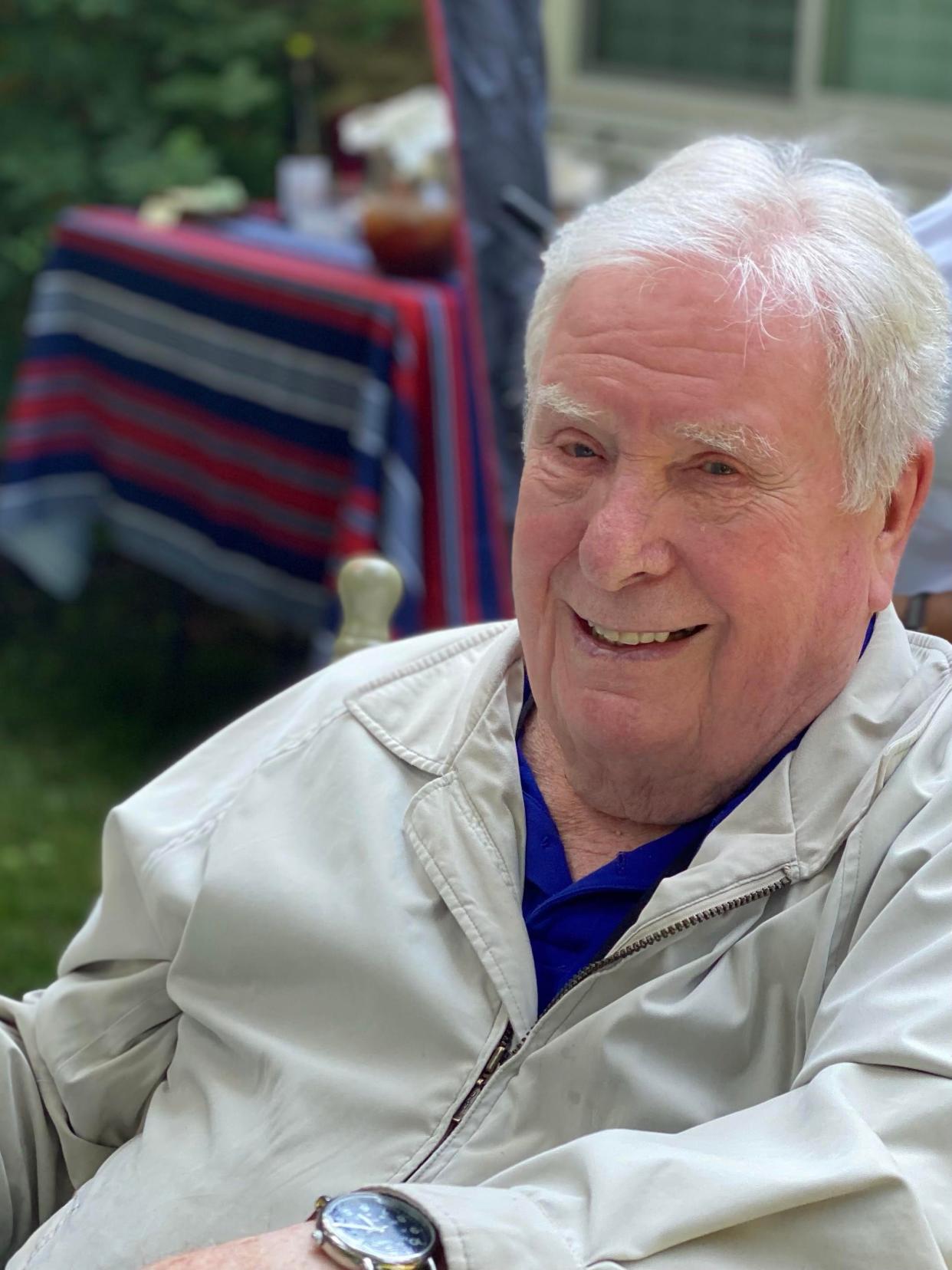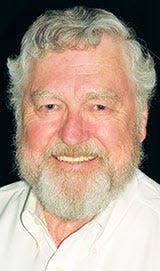Commentary on ‛The Integration of Oak Ridge’

What a joy to get an email from Dr. James Spicer, Ph.D., via Rachael Colby. I continue to be amazed at the connections with the document, “An Oak Ridge Story” written by Dr. Spicer and given to me by John Job. When I met Rachael, I knew something special was coming from our connection and you readers are benefiting from that.
Her first article, The Integration of Oak Ridge, A Unique Perspective, published October 21, 2021, can be seen here: https://www.oakridger.com/story/lifestyle/features/2021/10/22/integration-oak-ridge-unique-perspective/8467161002/
Her second article will publish following this commentary by the person most responsible for Rachael learning the details she is sharing with you readers. Look for it soon.
Below is what Dr. Spicer had to say about her first article published in "Historically Speaking."

***
I am very happy to see this article because it again calls attention to a very significant shift in our society, namely, the diversification of our society with the constant introduction of Black and Brown persons and those from other countries and a multiplicity of religions and cultures. Our nation was founded with the hope and expectation that exactly that would happen. Our Constitution was based upon those ideas.
But the trail from the beginning of our country to today has been a long and sometimes winding path. We did not treat the native population with the respect they deserved or the generosity we could have extended. And when the African citizens were introduced to our country, they were treated as only an economic opportunity, not as the warm and caring human beings they have proved to be.
White supremacy became the standard for the treatment of these persons who came here, not of their own volition. They were treated as slaves, valued for their work, not as brothers and sisters to share our time and place.
Eventually they objected to this status, found some white Americans who agreed with them, and the great Civil War occurred. The war ended, but the problem was not solved. Now it is our time to finish the task of integrating that great body of our population into our common life.
We know them, we respect them, and we live side by side in many, if not most of our significant activities. They are a large part of our military, our entertainment, our athletics, our academics, our religions, our caregivers, and so on.
Oak Ridge is unique as a town created and maintained for 20 years as a "Jim Crow" community. It was and is time to change that. While I participated in that change, it is an error to think that "Old White Men" made the beginnings of the change.
Some of us provided a framework for the process of change, but we did not provide the fact of change. As chairman of the Human Rights Committee, I organized a luncheon at the Davis Brothers Cafeteria and invited friends from Scarboro.
Fifteen courageous people came. They were hesitant and unsure, but they came. It was their courage, insight and understanding that made the first steps in change come about. I do not remember all their names, but if ever awards and medals are handed out, they should be the first. When they came, organized a little group, and then walked through the doors of that restaurant, Jim Crow left town.
Bit by bit, this expression of understanding and courage challenged and changed the awful and ridiculous limitations put upon our fellow citizens. But it will be as Black and Brown and people who talk funny and go to different churches become much of our community. We are going to like it, our children already like it, our grandchildren will think it was always this way
So, thanks to The Oak Ridger, Rachael Colby, and the town historian Ray Smith, for calling us all back to a very important job that we have not finished.
And special thanks to the people of Scarboro for being our neighbors and friends.
A grateful ex-Oak Ridger, James E. Spicer, Ph.D.
***
Thank you so much Dr. Spicer! I think you readers will enjoy the actual words written by Dr. Spicer in "An Oak Ridge Story" regarding the time he led the desegregation of the Davis Brothers Cafeteria in Oak Ridge. Here it is, quoted:
“The Davis brothers were concerned about how the actual occasion of integration would occur. I told Gene we would come back the next day with a plan and the mayor. I called an emergency meeting of the Human Relations Committee, and we devised a plan and with the help of the mayor, could take action in one week. The plan was that we would go to lunch on a regular workday with no announcement but plenty of security. The African American members of the Committee made arrangements for a group from Scarborough (Scarboro) to attend along with the Human Relations Committee. The mayor said he would look after security. Gene Joyce sent word to the Davis Brothers and the Glazers about our plan. I went to talk to the manager of the cafeteria, told him the plan and he turned red, then white, and began to shake. I did my best to reassure him but largely to no avail.
“On the Big Day (And It Was) Roy and I went down to the cafeteria at the appointed hour and found two cars of our Scarborough friends waiting. We went over to talk to them, and they were nervous; But we said, 'Folks just be yourself. Nothing is going to happen.' I was pretty sure of that because I was looking over my shoulder at a big parade of single men, all wearing jackets, going into the restaurant. Roy and I led the way with the Scarborough folks behind us, mixed with the committee members. When we got to the beginning of the tray line, the manager was standing there, sweat running down his face and his clothing wet with sweat. I smiled at him and said, 'It is going to be fine.' And away we went, filling our trays and finding our table. I surveyed the scene and counted about fifty police, some local, some FBI and some I couldn’t identify. As the lunch crowd came in no one seemed to notice that a change had come. It was a very successful day for Human Relations.
“But there was more. With no conversation or urging from us, the Davis brother decided to immediately integrate all their restaurants. Moreover, one of the brothers was the President of the Southern Restaurant Association and they announced that all the members would integrate their restaurants. Thank you, Mr. Glazer!”
***
How about that for reliving history! I can’t help but give you one more incident. This one had to do with a barbershop.
There was a large barbershop in the Downtown Mall with six chairs. Dr. Spicer thought this might be a trendsetter for all the barbershops in town. So, as was his way, he decided to talk to the “boss” of the barbershop. He entered and asked for “the boss.”
He was directed to the barber at the end chair. Dr. Spicer said, “I would like to find a time when we could discuss the issue of integration.” The man’s countenance changed dramatically. He became red in the face and obviously very angry. He asked Dr. Spicer to leave in no uncertain terms. Thinking he would smooth things over a bit, Dr. Spicer said, “Well, since I am here, I might as well get a haircut.”
The “boss” pointed to a young man about four chairs down who was just finishing up a customer. Dr. Spicer got a bit uneasy when the “boss” called the young man over and they had a brief conversation. The young man did not say anything, but pointed to the chair and Dr. Spicer got up and sat in it. The barber went behind the chair to the shelf that contained his tools. He selected one, came up behind Dr. Spicer and suddenly put an arm lock on Dr. Spicer’s head, pulling him back against the chair and then ran the clippers down the middle of the top of Dr. Spicer’s head. The barber then said, “You’re all done, and there is no charge!” Dr. Spicer shook his head and said, “Well, thanks for the haircut, I get your message.” Dr. Spicer slipped out of the chair and went out the front door. When he got in his car he looked back at the shop and could see a little through the window. He was not surprised to see the barbers all gathered in the middle of the shop laughing and pointing at him.
Dr. Spicer and Roy Colby decided to just let that incident lay without any reaction. But they did not give up. They found another way to desegregate the barber shops. It turned out to be something called “Appointment Barber Shops,” where they found one barber who was willing to desegregate, and the Human Relations Council sent lots of business to him by appointment. Other barbers soon saw the benefit of more customers.
There are lots more details in "An Oak Ridge Story" about the 1960s era integration efforts in Oak Ridge. I am sure glad Dr. Spicer wrote it down! Elizabeth Peelle also did an excellent job on documenting the history of segregation in Oak Ridge. Without these original documents, much of what happened would be hard to believe by those living in today’s culture. Our history is important and getting the facts documented by people who experienced it is most valuable.
This article originally appeared on Oakridger: Commentary on ‛The Integration of Oak Ridge’

